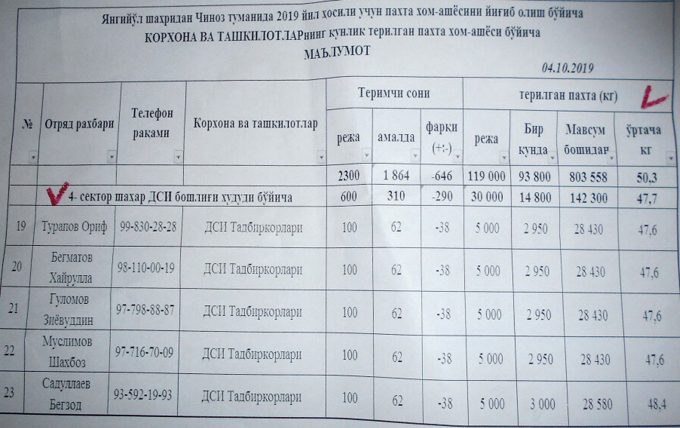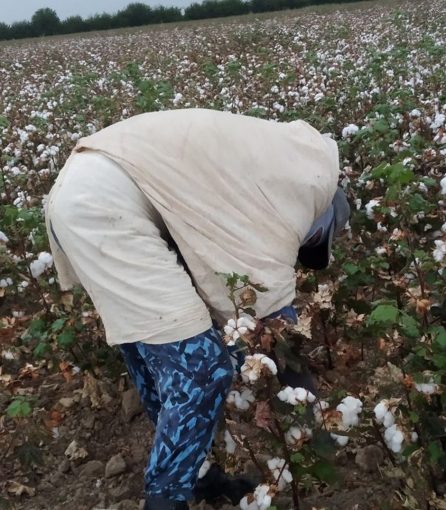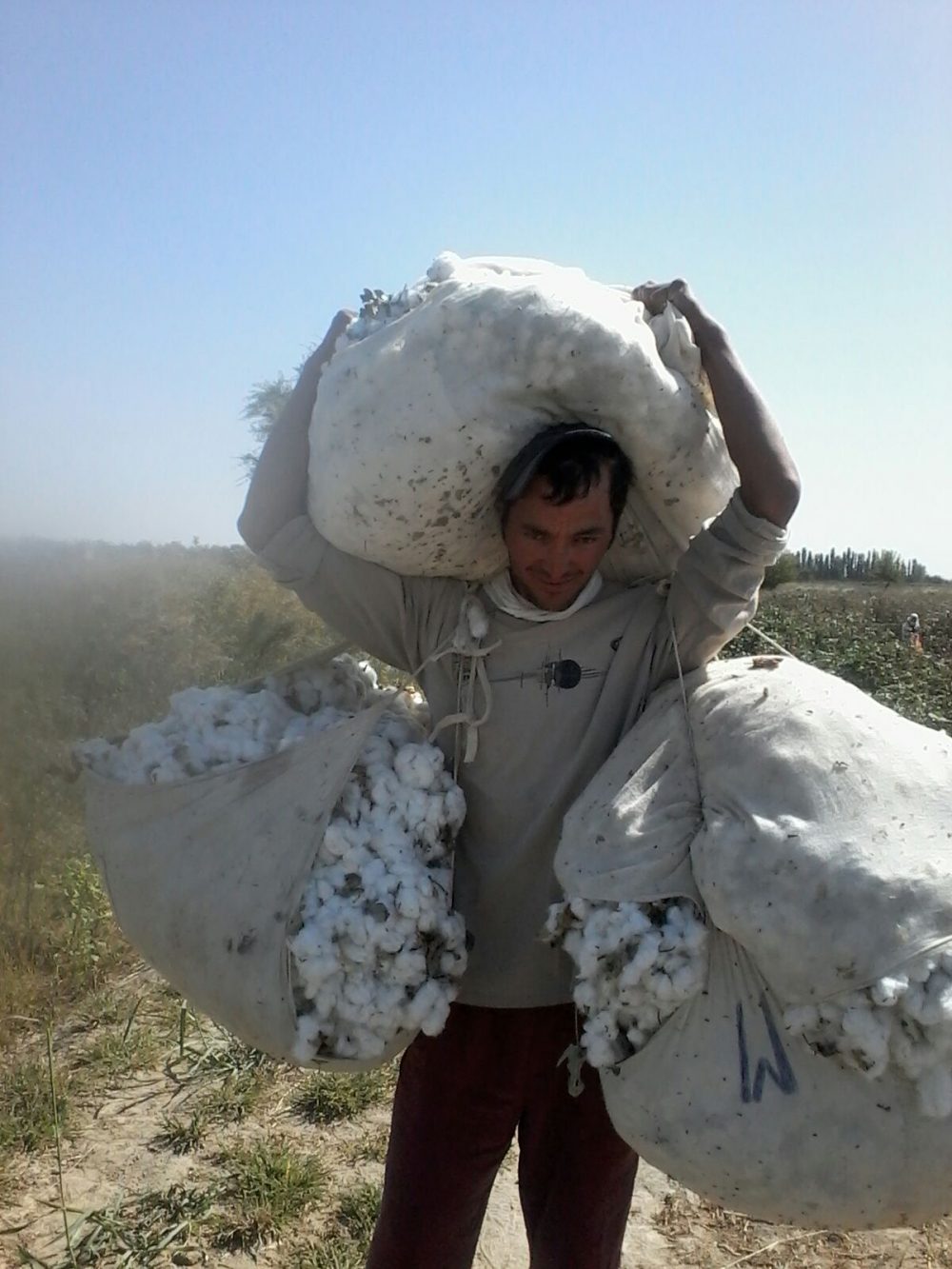Findings of Uzbek-German Forum for Human Rights
Summary
Uzbek-German Forum for Human Rights (UGF) has monitored child and forced labor use during cotton harvesting in Uzbekistan every year since 2010. Our network of trained, experienced, independent human and labor rights monitors has gained a deep, unique insight into the system of forced labor, the role of the Uzbek government, and the agricultural policy that facilitated it.
UGF and the Cotton Campaign warmly acknowledge and welcome the progress that has been made in recent years to eradicate the use of child labor and address the use of forced labor during cotton harvesting. We recognize that measures taken so far have led to significant tangible improvements. UGF’s monitoring results of the 2019 cotton harvest will be published in full in March 2020 but our initial findings give reason to be hopeful that the Uzbek government will continue its efforts to eradicate forced labor of all categories of people including public sector employees, entrepreneurs and mahalla communities. At the same time, previously identified shortcomings in the reform process remain and pose significant obstacles to ending forced labor and paving the way for responsible business to engage in the Uzbek cotton sector.
Measures such as clear political commitment, increase in wages and some improvement in working and living conditions, as well as public outreach campaigns promoting the prohibition of forced labor, have without a doubt contributed to the decrease in the use of forced labor. However, according to UGF’s findings of the 2019 harvest, it is clear that key structural drivers of forced labor remain in place and forced labor continues to affect the lives of thousands of Uzbek citizens. UGF monitored the cotton harvest in seven regions in Uzbekistan and identified known methods of coercion and key drivers of forced labor, which have been elaborated in the roadmap shared with the Uzbek government in 2019.


Key Findings
- While most pickers work voluntarily, UGF documented cases of forced mobilization of public sector employees and extortion from employees to pay for replacement pickers. Except for large cities and some district centers, employees from all over the country complained that they were afraid to refuse to go to the fields themselves or to pay for someone to pick cotton instead of them when directed to do so by government officials or their employers.
- The Uzbek government remained closely involved in cotton production, including privatized cotton clusters, and used coercion to meet quotas and production targets. Regional and local officials were again in charge of overseeing the fulfillment of government-imposed cotton production quotas and targets, that have been identified as a key driver of forced labor. Officials required people to pick cotton involuntarily or face consequences including loss of a job or social benefits or reprisals at work. In several regions, UGF monitors also documented cases when local officials forcibly mobilized pickers to work on privatized cluster farms.
- In 2019, the burden of forced labor shifted from people in lower-paying/lower status jobs in health and education to people working in mid-level civil servant positions, such as employees of banks, local administrations, and government agencies, as well as firefighters, police, military cadets, and emergency workers. These employees had to pick cotton or pay for a replacement picker or face consequences at their jobs. Entrepreneurs and traders also had to pick cotton or pay money to contribute to the cost of the harvest or risk consequences with the tax inspectorate that could affect their businesses. In one district of the Andijan region alone, UGF monitors documented pickers or replacement pickers who were sent to the fields by organizations including the district hokimiyat, tax inspectorate, utility companies, the Farmers Council, the agriculture inspectorate, banks, and insurance companies.
- Employees of schools and hospitals in most regions did not participate in the harvest at all, which is a significant improvement on previous years. However, employees of schools and kindergartens in Khorezm, Jizzakh, Fergana, Tashkent and Karakalpakstan regions testified that their involvement in the cotton harvest on weekends began in late October. School directors were instructed by the district hokimiyat to declare khashar (Uzbek tradition of voluntary unpaid community work) and to mobilize at least half of the school staff, including teachers and technical staff.
- Employees of medical institutions in the monitored areas, including nurses and paramedics, were also mobilized on weekends, receiving instructions from their immediate supervisors and the district hokimiyat in Jizzakh and Khorezm. A UGF monitor who observed medical staff in the Jizzakh region being sent to the fields reported that the deputy head doctor and a representative of the hokimiyat checked the names of pickers on a list as they boarded buses and warned them: “Nobody forced you to pick cotton; you came for khashar”.
- The most widespread involvement of medical workers in the cotton harvest took place in Karakalpakstan. For example, on October 28, UGF monitors spoke to a nurse working at the maternity ward at the Turtkul District Central Hospital who said that the staff had to leave every two days to pick cotton or give money to hire pickers and that out of 80 maternity hospital employees, 25 nurses or pickers hired by them left every day to pick cotton.
- UGF monitors obtained documents that show how forced labor continues to be government-organized or the result of government involvement. For example, a decree by the Ministry of Emergencies on September 27, 2019, orders 2,100 firefighters to participate in the cotton harvest (i). A letter from the Ministry of Defense in response to an inquiry from a human rights activist acknowledged that military cadets picked cotton as well. UGF monitors also received confirmed reports of the widespread mobilization of police, military conscripts, and cadets in the cotton harvest.

“Information on the daily amount of cotton to be harvested by enterprises and organizations sent from Yangiyul city to Chinaz district for the cotton harvest 2019”, October 4, 2019. © Elena Urlaeva
- Under the cluster system, the government has also introduced cotton production targets which local officials bear responsibility for. In the 2019 harvest, this has resulted in officials forcibly mobilizing pickers to pick cotton on private cluster farms, presenting conflicting choices for enterprises that are committed to preventing the use of forced labor in their value chains. UGF’s findings from the 2019 harvest show that privatized clusters enter into contracts with farmers to produce contract amounts in a way that closely mimics the quota system. Farmers lack autonomy, protection, have no bargaining power, and have no real choice over their contractual cluster partners. They face penalties for failure to meet the contract amounts, including threats from hokims that they will lose their land. Management of cluster contracts is often under the supervision of the prosecutor or other officials. While there is a significant variation among clusters, some of them essentially act as joint ventures with local administrations whereby clusters receive financing and the hokimiyat pressures farmers to deliver contract amounts and in some cases, mobilize pickers.

Students from the Institute for Fire Safety, October 2, 2019. © Ozodlik
- Although the government has strengthened penalties for officials who use forced labor and has moved to criminalized repeat violations, the Labor Inspectorate has often failed to conduct proper investigations that result in the lack of accountability for officials who direct forced labor. The feedback mechanisms run by the Ministry of Labor and the Federation of Trade Unions of Uzbekistan for citizens to report forced labor use remain weak and lack widespread trust among the population. People who call hotlines are required to give their full name, address, passport and employment details to register a complaint.
- Inspections usually do not go up the chain of command but target low-level officials and supervisors who are themselves pressured to provide cotton pickers. Penalties are ineffective. A UGF monitor in Karakalpakstan reported a head doctor who required hospital employees to pick cotton. A labor inspector subsequently confirmed that the doctor had already been fined for using forced labor but continued to send employees to the fields nonetheless, presumably because he was under pressure to do so.
- The role of the mahalla or community leaders in the recruitment of both voluntary and involuntary cotton pickers has remained intact. Mahalla leaders have considerable power in their communities because of their responsibility and discretion in the disbursement of social benefits so that residents feel unable to refuse the “request” to pick cotton. One mahalla leader told UGF: “If we didn’t have people relying on us for benefits, we wouldn’t be able to find pickers.” Mahallas are under pressure to provide pickers on behalf of the mahalla, creating problems for pickers who want to pick cotton but prefer to work as replacement pickers for employees of public organizations so they can receive the replacement fee in addition to the price per kilo.
- Civil society plays a vital role in ensuring transparency and accountability, identifying violations, documenting them, and bringing them to light. While the government has made commitments to allow independent monitoring of the cotton harvest, it has not created an enabling environment for the free operation of independent human rights activists or civil society organizations and continues to interfere with the work of independent monitors, including through arbitrary detention and spurious criminal charges. Most notably, the following cases give cause for alarm:
- In January 2020, the government rejected the application to register Chiroq, an independent labor rights nongovernmental organization (NGO) in Nukus, Karakalpakstan, citing three minor grammatical errors in the application. In February and May 2019, it has also twice rejected the registration attempts of Restoration of Justice, an NGO that seeks to restore rights to people wrongfully imprisoned. The application was filed by three former political prisoners, one of whom participates in ILO monitoring (ii).
- On October 18, 2019, Makhmud Rajab, a poet, journalist, and labor rights monitor from the Khorezm province in northwest Uzbekistan was sentenced to a five-and-a-half-year suspended sentence on criminal charges of smuggling “extremist” materials. Rajab was taken into custody on September 22, when he staged a “protest march” to Tashkent to request that charges brought against him be dropped. He was sentenced to ten-day administrative arrest and released on October 3. Rajab has reported on forced and child labor in the cotton sector since 2009, including as a monitor for UGF. He is no longer able to carry out his labor rights work due to fears that he will be found in violation of the terms of his sentence and sent to prison.
- In September 2019, blogger and activist Nafosat Ollashukorova, who covered the arrest of Makhmud Rajab, was first held under administrative arrest and then forcibly detained in a psychiatric hospital for almost three months. She has no history of mental illness and has been given no access to her medical files nor information on what medication she was forcibly administered. Since her release in December, she has complained of further attempts to detain her and has since left the country in fear of her life. Nafosat is the third activist in the space of 8 months to leave Uzbekistan due to reprisals from the authorities which activists believe are related to their human rights work.
UGF will share its full findings of 2019 cotton harvest monitoring in a final report in March 2020.
Uzbek-German Forum, January 2020
i Order No. 492 of the Ministry of Emergencies, the involvement of personnel of the Ministry of Emergencies in the cotton harvest in Jizzakh, Tashkent, September 27, 2019.
ii “Uzbekistan: reforming or redecorating?,” International Partnership for Human Rights, October 25, 2019, https://www.iphronline.org/uzbekistan-reforming-or-redecorating.html.





